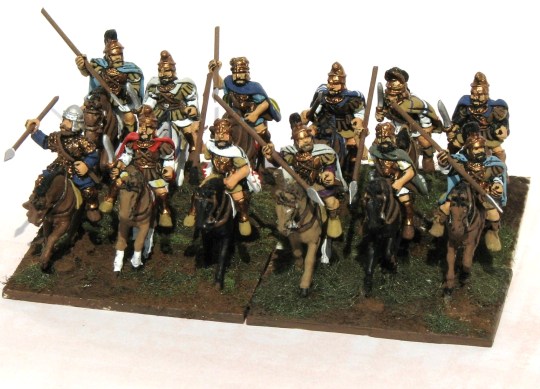 Rajtarzy pojawili się w Europie Zachodniej w XVI wieku, zastępując ciężej opancerzoną kawalerię. Ich taktyka opierała się na częstszym użyciu broni palnej. Zwykle byli uzbrojeni w dwa lub więcej pistoletów oraz oraz rapier lub pałasz do walki wręcz.
Rajtarzy pojawili się w Europie Zachodniej w XVI wieku, zastępując ciężej opancerzoną kawalerię. Ich taktyka opierała się na częstszym użyciu broni palnej. Zwykle byli uzbrojeni w dwa lub więcej pistoletów oraz oraz rapier lub pałasz do walki wręcz.W połowie XVII wieku rajtarzy rzadziej stosowali już opancerzenie. Większość posiadała po prostu skórzane kaftany i kapelusze. Rajtarzy Gustawa II Adolfa pod wpływem doświadczeń z walk z wojskami polsko-litewskimi byli szkoleni już nie tylko do walki za pomocą broni palnej, ale przede wszystkim typowych szarż kawaleryjskich, w których najpierw oddawali strzały z pistoletów, a następnie uderzali na wroga.

Reiters appeared in Western Europe in 16th Century. They had replaced earlier armoured cavalry. Their tactics were based on use of firearms. Usually they were armed with two or more pistols and a rapier or broadsword for melee.
In mid 17th Century raitars were usually unarmoured. Most had only leather jacket and a hat. Due to experience of fighhting against Polish and Lithuanian forces Swedish reiters of Custav II Adolf were trained not only in using firearms tactics. They were to charge the enemy, shoot at him at short distanse and then attack with rapiers.
 Figurki 15mm produkcji Wargamera. Ładna rzeźba. Ich jedyne mankamenty to moim zdaniem zbyt statyczne pozy koni oraz łatwo gnące się rapiery.
Figurki 15mm produkcji Wargamera. Ładna rzeźba. Ich jedyne mankamenty to moim zdaniem zbyt statyczne pozy koni oraz łatwo gnące się rapiery.15mm Wargamer figures, very nicely sculpted. Their only drawbacks are not too dynamic poses of their horces and thin rapiers that bend easly.





















Brak komentarzy:
Prześlij komentarz